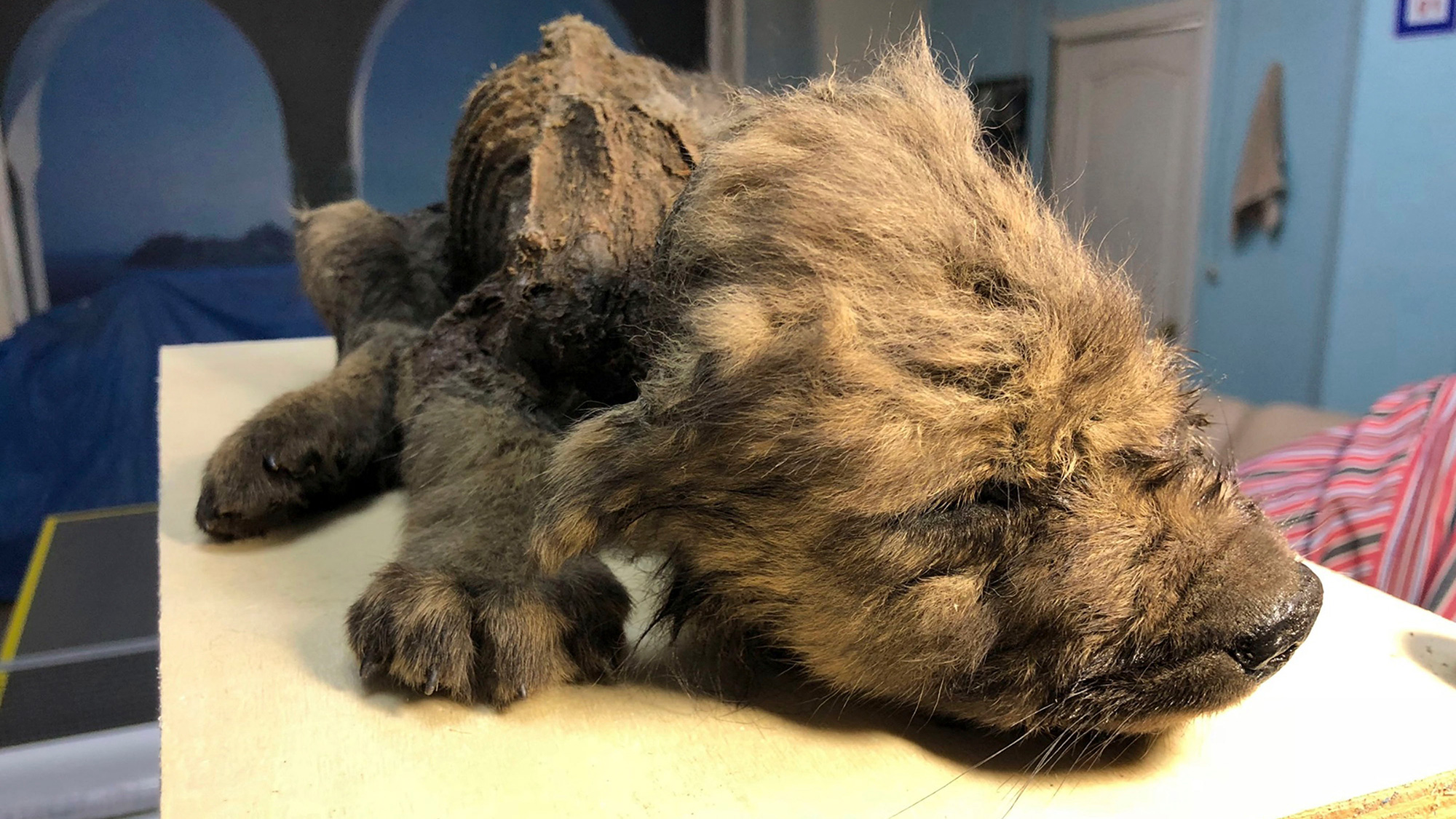Mummified mystery pup that died 18,000 years ago was a wolf
"Dogor" was frozen in Siberian permafrost.

A mummified pup discovered in Siberia is not a dog, new research finds. Rather, the cute-and-cuddly canine is actually a young wolf.
In a new study aimed at understanding dog domestication, researchers analyzed the genome of the puppy, along with the genomes of 72 ancient wolves. The pup, which was found in the Siberian permafrost in 2018 and whose lineage has been debated ever since, was nicknamed "Dogor" and was fully intact, with pettable fur and unbroken whiskers. At first, scientists couldn't tell if the 18,000-year-old pup was a wolf or a dog, but the new analysis revealed that it was a wolf — and that it was not very closely related to the earliest dogs.
"We know that dogs were the first animal to be domesticated way back in the ice age," said Anders Bergström, a postdoctoral fellow in ancient genomics at the Francis Crick Institute in London. But other aspects of their domestication are some of the big mysteries of human prehistory, he told Live Science. "We don't know where in the world it happened," Bergström said. "We don't know what human group was involved, and we don't know whether it happened once or multiple times."
Wolf to woof
Dogor's genome was one of 66 never-before-sequenced ancient wolf genomes studied by Bergström and his colleagues, who also looked at the genomes of five previously sequenced ancient wolves and one ancient dhole, another type of wild dog that is still found today in parts of Asia.
The researchers were looking for hints as to where domesticated dogs (Canis lupus familiaris) came from. Clearly, dogs were domesticated from wolves (Canis lupus), but the genes of modern wolves have shifted too much over the ages to reveal which wolves dropped their wild ways to team up with humans. To pinpoint the closest wolf ancestors of the first dogs, Bergström said, it's important to look at wolves from the time when dogs were being domesticated — between about 30,000 years ago and 14,000 years ago.
The 72 samples covered 100,000 years of prehistory in Europe, Siberia and northwestern North America. The genomes revealed that wolves thrived throughout the ice age, with a globally connected population. The most intriguing results, however, had to do with the transition from wolf to dog. The researchers found that dogs are more closely related to ancient wolves from eastern Eurasia than to ancient wolves from western Eurasia.
"This suggests to us that probably domestication happened somewhere in the East, somewhere in Asia, and probably not in Europe," Bergström said. "However, Asia is, of course, very large; we can't really narrow down with more precision where it happened."
Sign up for the Live Science daily newsletter now
Get the world’s most fascinating discoveries delivered straight to your inbox.
Northeast Siberia, where Dogor was found, does not appear to be ground zero for the genetic transition, Bergström said, as wolves from this region aren't closely related to the oldest dogs. But there are many other areas in Asia where ancient wolf DNA has yet to be collected and studied, so it's possible the pre-dog wolves came from a spot that has never been sampled.
A fuzzy tale
Genomic analysis also told the researchers that dogs from the Near East and Africa get a chunk of their genes from an unknown western Eurasian source. There are two possible explanations for this. The first is that dogs were domesticated in Asia, and as they moved westward, they mixed with local wolf populations, bringing in western Eurasian wolf genes. Another explanation could be that domestication occurred twice, in both an easterly and more westerly location, and that dogs from these two domestication events eventually mixed.
Whatever happened, Bergström said, it must have occurred before 7,200 years ago, which is the age of the oldest dog found in the Near East. That specimen had both the eastern and western gene contributions.
"By getting even earlier dog genomes from the Near East or that general region, we might be able to say more about whether it was a single [process] or two domestication processes," Bergström said.
The results were published June 29 in the journal Nature.
Originally published on Live Science.

Stephanie Pappas is a contributing writer for Live Science, covering topics ranging from geoscience to archaeology to the human brain and behavior. She was previously a senior writer for Live Science but is now a freelancer based in Denver, Colorado, and regularly contributes to Scientific American and The Monitor, the monthly magazine of the American Psychological Association. Stephanie received a bachelor's degree in psychology from the University of South Carolina and a graduate certificate in science communication from the University of California, Santa Cruz.









